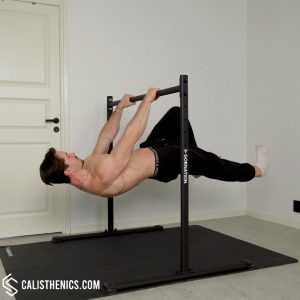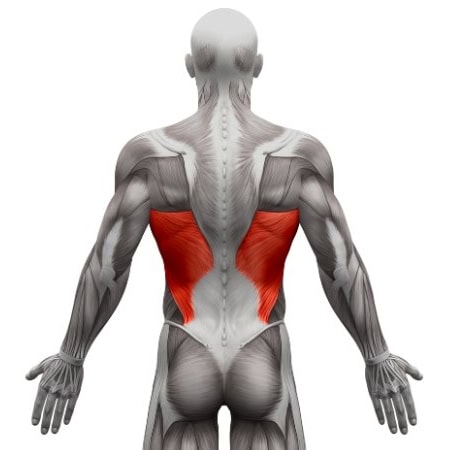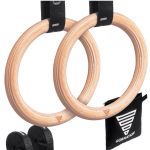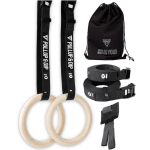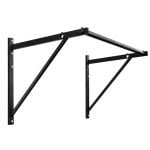Single Leg Front Lever
How to do Single Leg Front Lever?
The single leg front lever is an intermediate calisthenics exercise that bridges the gap between the advanced tuck front lever and the full front lever. This variation involves holding one leg straight while keeping the other leg in a tucked or advanced tuck position. It challenges the core, lats, and posterior chain while introducing asymmetrical loading, which enhances body control, stability, and strength.
Check out our ▶️ front lever training routine to unlock the full front lever!
The equipment used is the ▶️ Static Bar from GORNATION --> For 10% off use code CS10.
CREDIT: This video was prepared in collaboration with calisthenics athlete Simon Imhäuser who was performing the exercise in the video and calisthenics coach Daniel Flefil who shot and edited the video.
Steps to Perform a Proper Single Leg Front Lever:
1. Set Up on a Pull-Up Bar:
• Hang from a pull-up bar with a shoulder-width overhand (pronated) grip.
• Fully extend your arms and engage your shoulders by pulling them down and away from your ears (scapular depression).
2. Move into a Tucked or Advanced Tuck Position:
• Pull your knees toward your chest into the tucked front lever position, or move to an advanced tuck where your thighs are parallel to the ground.
• Engage your core and back muscles to stabilize your torso.
3. Extend One Leg Straight:
• Slowly straighten one leg while keeping the other leg in the tucked or advanced tuck position.
• Ensure the straight leg is fully extended, with the toes pointed for alignment and tension through the entire body.
4. Align Your Body Parallel to the Ground:
• Lean back slightly to bring your torso parallel to the ground, keeping your straight leg in line with your body.
• Maintain a neutral spine and keep your hips level, avoiding any twisting or sagging.
5. Hold the Position:
• Focus on keeping your shoulders engaged, core tight, and body still as you hold the single leg front lever.
• Avoid bending your elbows or letting your shoulders shrug upward.
6. Lower Back to the Starting Position:
• Slowly lower your body back to a hanging position with control, maintaining stability throughout the descent.
7. Repeat on the Opposite Leg:
• Perform the exercise with the opposite leg straight to ensure balanced development.
Benefits of the Single Leg Front Lever
• Builds Core and Back Strength: The asymmetrical loading challenges the core and lats, enhancing strength and stability.
• Enhances Body Control: Holding one leg straight while maintaining alignment improves body awareness and control.
• Progression Toward Full Front Lever: This exercise prepares you for the full front lever by increasing the leverage and strength demands.
• Improves Shoulder Stability: Maintaining scapular depression strengthens the shoulders, reducing the risk of injury.
• Functional Strength Development: Builds strength that supports other calisthenics skills and enhances overall athletic performance.
• Low Equipment Requirement: Requires only a pull-up bar, making it accessible for home workouts or outdoor training.
Common Mistakes to Avoid
• Bending the Straight Leg: Fully extend and point your straight leg to ensure proper alignment and tension.
• Shrugging Shoulders: Keep your shoulders depressed to maintain stability and avoid unnecessary strain.
• Sagging Hips: Ensure your hips stay level and aligned with your torso to prevent twisting or sagging.
• Using Momentum: Avoid jerking or swinging into the position; focus on slow, controlled transitions.
• Holding Your Breath: Breathe steadily to stay relaxed and maintain focus during the hold.
Tips for the proper execution of Single Leg Front Lever
Engage the Core and Lats: Keep your core tight and lats engaged to maintain a stable and aligned body position.
Maintain Shoulder Depression: Keep your shoulders down and away from your ears to stabilize the position and prevent unnecessary strain.
Point the Straight Leg: Fully extend your straight leg with toes pointed to create a streamlined and aligned body shape.
Focus on Hip Leveling: Ensure your hips remain level to avoid twisting or asymmetry.
Controlled Movements: Perform the transitions slowly and avoid using momentum to achieve the position.
Muscles worked when doing Single Leg Front Lever
Primary Muscles:
•Latissimus Dorsi (Lats): Provide stability and control to keep the torso parallel to the ground.
•Core Muscles: The rectus abdominis, transverse abdominis, and obliques work to stabilize and align the torso.
Secondary Muscles:
•Rhomboids and Trapezius: Assist in scapular depression and stabilization.
•Biceps: Engage isometrically to support the arms during the hold.
•Erector Spinae: Stabilize the lower back and maintain spinal alignment.
•Glutes: Activate to keep the hips level and support the straight leg.
Primary Muscle(s):
Secondary Muscle(s):
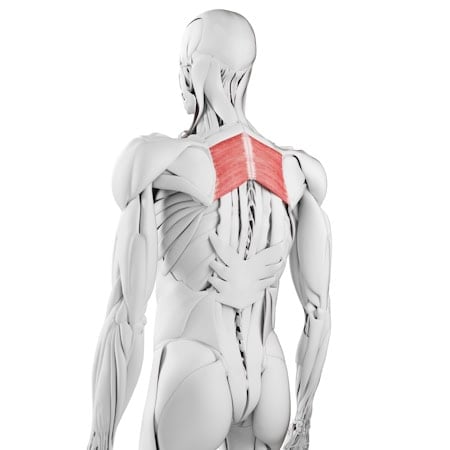
Rhomboid
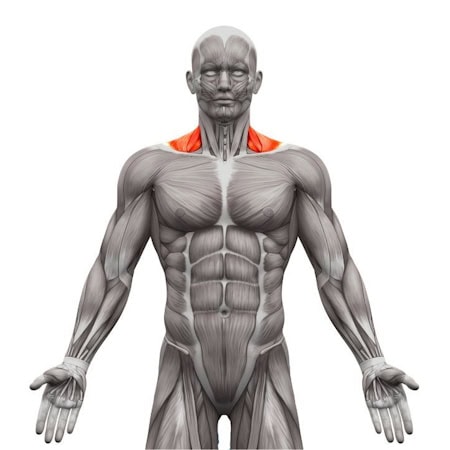
Trapezius
Adjust the difficulty of Single Leg Front Lever
How to make Single Leg Front Lever harder?
How to make Single Leg Front Lever easier?
How to make Single Leg Front Lever harder?
To make Single Leg Front Lever harder:
-
Extend the Tucked Leg Slightly: Move the tucked leg into an advanced tuck position to increase the leverage and challenge.
-
Hold for Longer Durations: Gradually increase the time you hold the single leg front lever, aiming for 10-15 seconds or longer per leg.
-
Transition Toward a Full Front Lever: Slowly straighten the tucked leg until both legs are extended, progressing to a full front lever.
-
Perform Controlled Lowering: Start in the single leg front lever position and slowly lower your body to a hanging position to further challenge your core and back.
How to make Single Leg Front Lever easier?
To make Single Leg Front Lever easier:
-
Tuck the Non-Straight Leg More Closely: Keep the tucked leg closer to your chest to reduce the leverage and decrease the load on your core and lats.
-
Use a Resistance Band: Loop a resistance band around the pull-up bar and under your hips to provide assistance and reduce the intensity of the hold.
-
Perform Dynamic Reps: Instead of holding the position, perform controlled lifts into and out of the single leg front lever to build strength.

